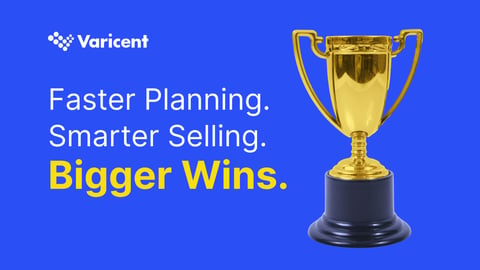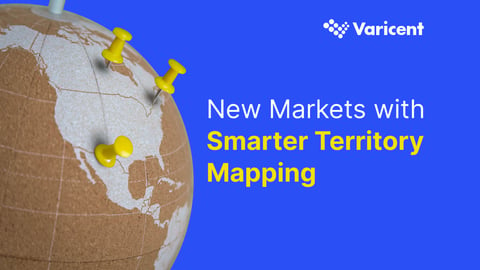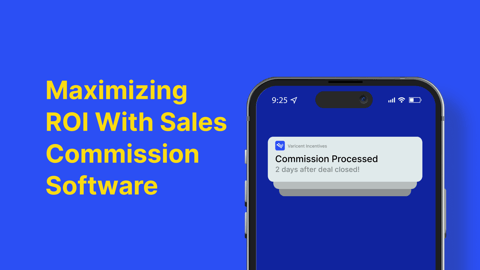For many people, incentive compensation management is ‘one and done,’ something you only need to worry about once. This is odd in many ways because the senior management in many companies would never dream of adopting this approach to investing in their core processes. They recognize that technology moves forward and they need to invest to remain competitive.
The Critical Need to Invest in Incentive Compensation Management Software
Companies don’t think twice about investing in new technology, machinery, stores, or fleets if there is a business case for them to do that. These investments help them increase revenue, cut costs, launch new products, and serve new markets. The systems and resources that aren’t considered ‘core’ don’t get treated the same way – they’re usually kept in service well beyond their useful life to save costs.
This is understandable but flawed. Low-profile but critical systems often get left behind as the world charges forward at an accelerating pace. Allowing these systems, applications, and processes to languish can be a false economy; they can be the source of significant value if new capabilities are fully embraced.
Incentive management applications can easily fall into this ‘non-core’ category, as companies see the systems they use to manage their compensation planning as ‘one and done.’
However you approach ICM, whether a dedicated application or a mix of email and spreadsheets, you’re likely missing out on some powerful new capabilities that can create significant value. Let’s explore some of them.
Leverage Data Analytics for Better Results
Data can bring fresh and exciting insights into designing, managing, and updating an incentive compensation model. Recent developments around cloud computing, data management, AI, and Machine Learning mean that employees on the ‘front line’ can become their own data scientists with capabilities at their fingertips that their predecessors, even just ten years before, could only dream of.
In many ways, the issues that data analytics can surface go to the heart of why you want an industry-leading incentives platform as part of your business management toolkit. Incentives compensation management is fundamentally about results and designing a model that maximizes the chances of delivering that successfully for your sales team.
Marketing analytics can help you better understand who your best customers and prospects are, where they’re located, and their buying behavior. You can identify how they buy from you and interact with your business, sales team, website, and eCommerce systems.
Making sense of millions (if not billions) of data points is only possible with automated data capture, integration, and analytic capabilities. Understanding the market dynamics in this level of detail allows you to develop incentive models based on the real opportunity your business faces rather than a collection of hunches, hopes, and wishes.
Test a Range of Options
When upgrading your incentive compensation platform, take a step back and do some scenario analysis to see what mix of incentives – base salary, commission models, and bonus models – will get the results you’re looking for.
In the past, sales managers used scenarios based primarily on what the company wanted to achieve rather than what was feasible. It’s too easy for a company to understate or overestimate the opportunity and create incentive objectives that are either too easy or too hard to achieve. A detailed analysis was often impractical for all but the best-resourced business.
The critical question is how this market insight translates into finding the suitable compensation model for you. So, let’s start with the critical market data.
As we’ve already explored, this market is essentially about establishing some ‘ground truth’ about the realities of your market, how your prospects buy, and how best to structure your sales and marketing activity to engage with your audience. With a realistic understanding of the scale and shape of the opportunity you face, you can develop plans based on the market’s needs rather than senior managers' whims, hopes, and wishes.
In a sales territory, a salesperson can realistically service a maximum number of prospects, depending on the length and complexity of the typical sales cycle, the number of prospects in a market, and the average order value. A sales territory might comprise 1 or 2 prospects or one or two thousand; it just depends. You’ll adopt very different engagement strategies for these examples. Using market analytics to size your sales territories accurately will help you understand how many salespeople you need and what skill sets are most valuable.
It also helps you understand the quota each territory needs to support and, therefore, what commission model will work most effectively based on how customers buy from you. While this may be complex, the situation that drives your market analytics can also help develop different options for territory plans, quota plans, and commission plans that yield the best results.
Consider Rapid and Cost-Effective Deployment Models
These capabilities were typically only available to companies that could invest in large IT budgets, data analysts, and data scientists. Only they had the business case to invest in the often millions of dollars needed to get meaningful results.
The good news is that technology has removed much of the complexity, risk, and cost of implementing this data-led market engagement project. Cloud computing, Machine Learning, and AI capabilities allied with one-click systems integration and workflow automation have significantly reduced the price point of these systems.
Companies no longer have to hire data scientists and project teams to deliver these platforms. Much of the work has been done for them, and managers only need to provide the vision to make the most of these technology environments.
3 Tips for Upgrading Your Platform
While this may seem complex and new, in many ways, it isn’t. You simply need a good idea of what you want to achieve. The use of technology removes much of the complexity involved. There are some steps you may want to follow:
1. Decide Which Data You Want to Use
To understand your market dynamics, the first place to look is your sales and marketing system, usually your website and your CRM platform. The data from these platforms will give you access to where your customers and prospects are located, their buying process, how long their sales cycle is, and how these might vary by sector, geography, or industry. You can get valuable insight from your successful campaigns and those that weren’t successful. Your finance systems and third-party data sources can also be helpful, giving you richer insights into your target market.
2. Run Your Analytics
With your data in one place, you’re free to run your analysis. You can use automation to dive deep into the data to see the patterns and threads that could help you find new opportunities and ways to engage with your target market. Maybe you need to re-package your offer for markets with different buying criteria or needs.
3. Run Your Reports
Run reports highlighting which areas are growing, standing still, and which have the most significant growth potential. As we’ve discussed, you can also review sales territories, quota plans, and commission plans using these market metrics to ensure you get the right results for your business.
Varicent offers a comprehensive and proven incentive compensation management solution that helps you automate the development of the ideal incentive model, leveraging market analytics, territory, quota planning, and commission model developments. Proven and robust, we offer you the opportunity to enhance how you motivate your employees and take your business forward.
Learn more about managing your incentives in our eBook, The State of Incentive Compensation Management.




